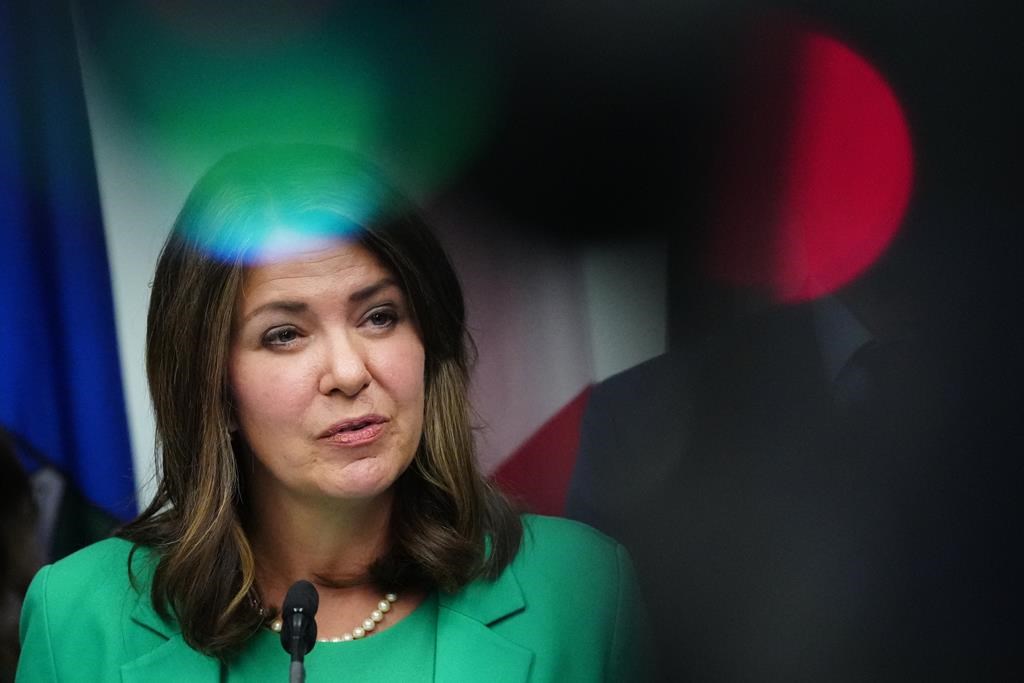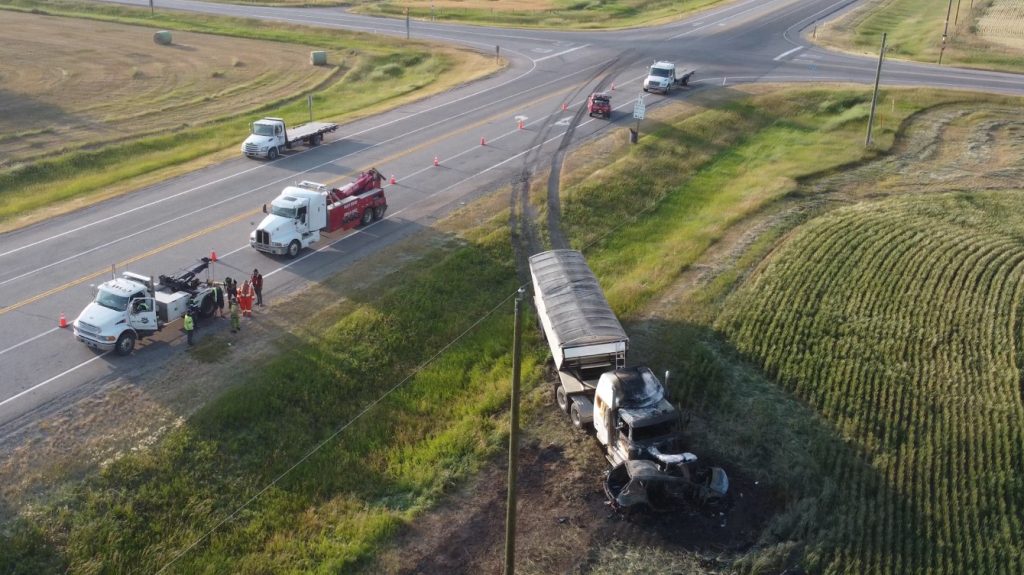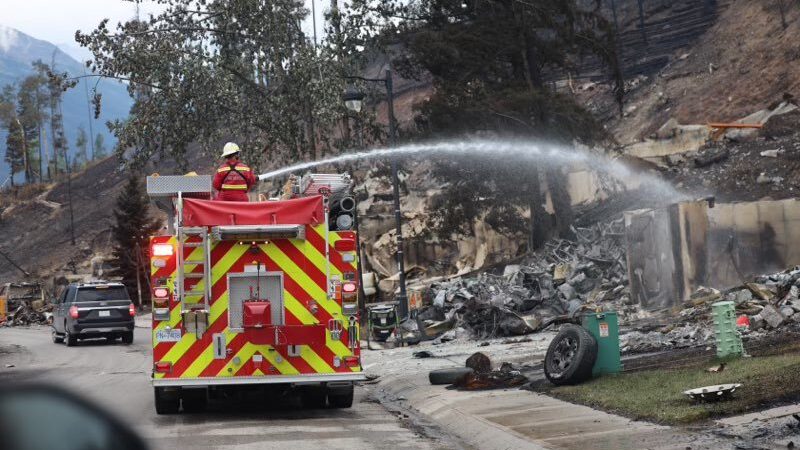Health care, education come out ahead in restrained Alberta budget

Posted Feb 29, 2024 2:00 am.
Last Updated Feb 29, 2024 4:02 pm.
EDMONTON — Health care and education came out ahead Thursday in a generally restrained Alberta provincial budget forecasting a paper-thin surplus that could easily go up in smoke.
“It is a solid budget based on measured choices,” Finance Minister Nate Horner told reporters.
Horner followed instructions from Premier Danielle Smith in delivering the 2024-25 budget, keeping spending increases below 6.2 per cent, a figure derived from the province’s rate of inflation and population growth.
That has led to a total spending forecast of $73.2 billion, a 3.9 per cent increase from last year.
Horner expects a surplus of $367 million.
However, the $2 billion the government has reserved for contingencies such as drought and wildfire is about a third less than what was actually spent last year on those disasters. The province is expecting another dry and hot summer.
“We know we’re starting out in a rough spot,” Horner said.
“You could make (a contingency fund) as high as you want, but you do need it to be realistic.”
As well, resource revenues are expected to make up nearly a quarter of provincial revenues through 2026. Each dollar drop in the benchmark price of oil costs Alberta more than $600 million.
The government has forecast the price of West Texas Intermediate crude to average US$74 per barrel. On Thursday, the U.S. oil benchmark was above US$78 per barrel.
The $1.1-billion increase in health-care spending will largely go to public health, doctors’ pay and acute care. The costs of the government’s previously announced health-care restructuring are expected to be another $70 million this year, although officials suggest those costs will be recouped through efficiencies.
The budget contains no funds for a long-promised hospital in south Edmonton. There is $20 million over three years to plan for a stand-alone children’s hospital in the provincial capital, but no timeline for construction to begin.
Spending on mental health and addiction is forecast to decrease slightly in 2024-25, from $180 million to $171 million. However, that is expected to rise to $236 million the following year as the government moves forward on its plans for treatment centres.
Education also received a 4.4 per cent increase. Most of that will be used to hire new teachers and educational assistants.
“Budget 2024 will allow schools to hire hundreds more teachers, educational assistants and other support staff,” Horner said.
He said the budget allocates money for 98 new and modernized schools.
Funding for private schools and early childhood centres will increase at four times the rate of public K-12 spending.
Horner confirmed a tax cut for lower-income Albertans the United Conservatives promised during last year’s provincial election will be put off for two years.
The budget contains $151 million in operating funds over the next three years to enhance its Wildfire Management Program. There’s an additional $55 million for new equipment, including replacing the air tanker fleet.
The budget includes a new annual tax on electric vehicles, raises the levies on cigarettes and vaping, and allocates $15 million for a new hockey arena in Calgary.
Resource royalties are expected to shrink by about 12 per cent from last year, but will still make up nearly a quarter of provincial revenues over the next three years.
The government will put $2 billion into its rainy-day Heritage Savings Trust Fund out of cash left over from this year, but anticipates no payments for the next three years.
The budget anticipates operating surpluses of $2.6 billion by 2026.
Alberta’s total taxpayer-supported debt is $78.4 billion. The province will borrow about $20 billion this year to fund capital projects and service debt. Borrowing is expected to fall to $4 billion by next year.
Here is where some of the funds in this year’s restrained provincial budget are being spent:
Health Care
Health care is getting one of the biggest spending boosts, with an operating budget of $26.2 billion. That’s an increase of $1.1 billion, or 4.4 per cent, from the previous year’s forecast. As the United Conservative Party government looks to overhaul health service delivery in the province, it’s putting aside $475 million to shore up primary care.
Education
Education is also getting a 4.4 per cent increase, with operating expenses up $393 million to $9.3 billion. About $680 million in new capital funding is to go toward 43 school projects to create 35,000 new and modernized student spaces. Over the next three years, $24 million is being set aside to fund growth for new private schools and early childhood services operators, “increasing the province’s support for parental choice in education.”
Disaster planning
The budget includes a $2 billion contingency for emergencies, about a third less than what is estimated to have been spent last year, when many communities in the province dealt with wildfires and other disasters. The province is setting aside $151 million in operating funds over the next three years to enhance its Wildfire Management Program and is spending $55 million in capital for new firefighting equipment and facilities. There’s also $1.3 billion in capital funding for water management and drought preparedness over the next three years.
Tackling Crime
In Public Safety and Emergency Service’s $1.2-billion operating budget, $10 million is to go toward adding 100 street-level police officers for high-crime areas in Calgary and Edmonton. There’s also an $85-million operating expense for the Prevention of Family and Sexual Violence program, an increase of $5 million from last year’s estimated spend. The province has earmarked $49 million in capital funding over three years for equipment and facilities to support first responders and sheriffs.
Bolstering the provincial nest egg
The province plans to put $2 billion in extra cash into its Heritage Savings Trust Fund, bringing its value to $25 billion. Finance Minister Nate Horner says the government aims to reveal a long-term plan later this year to grow the fund to between $250 billion and $400 billion by 2050.








